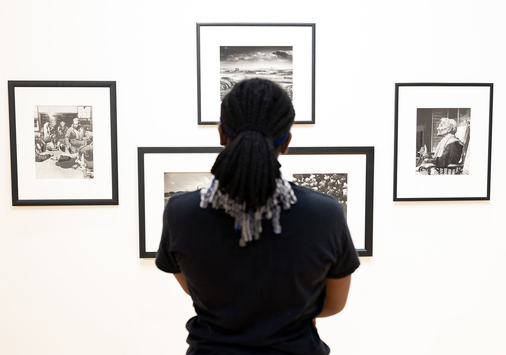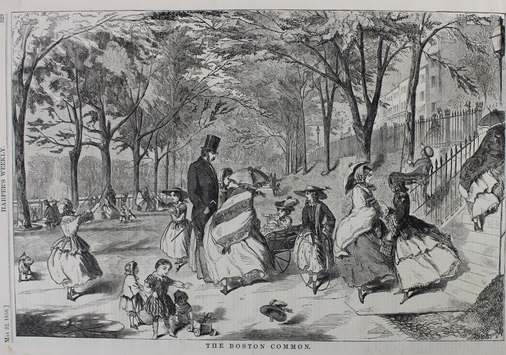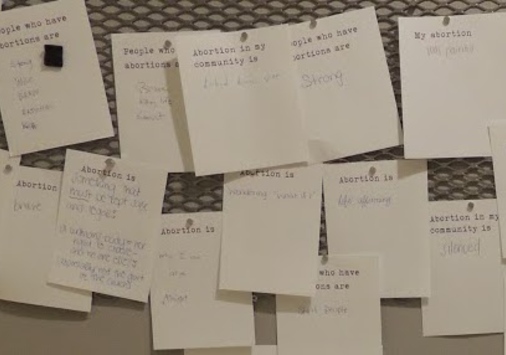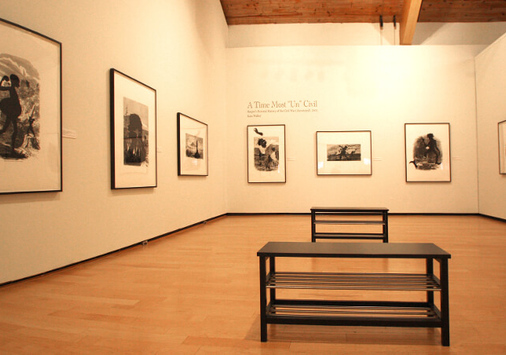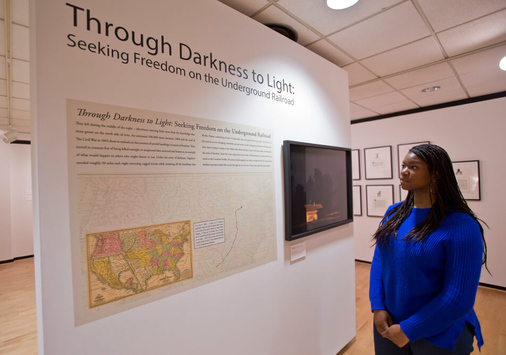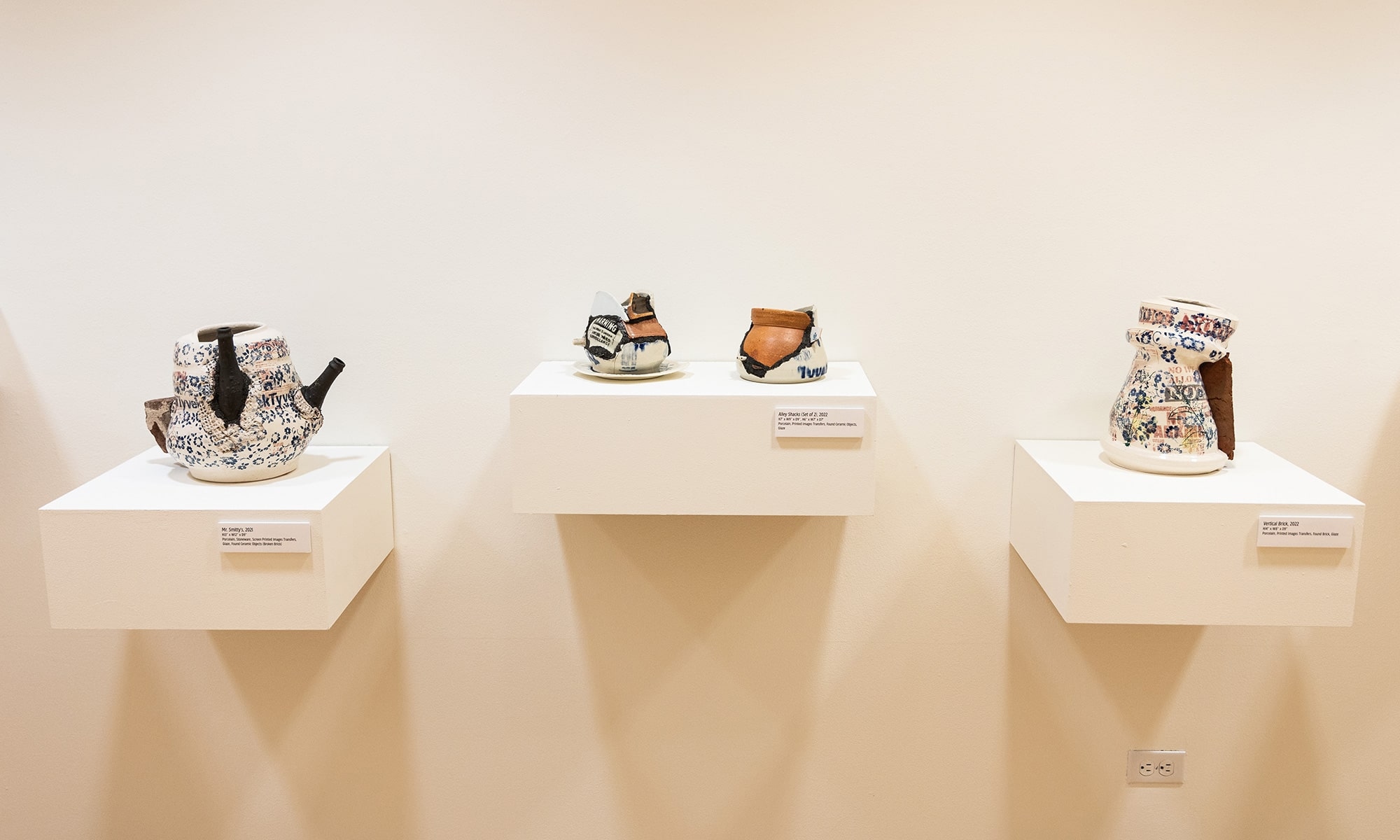
Any Denisonian who has a connection with the Bryant Arts Center might have passed by Jstn Clmn’s colorfully coordinated workspace on its second floor.
Throughout the corridor, you can witness Clmn’s selection of made or found ceramic artworks. The objects seem dissipated without a clear orientation at first, yet they are carefully displayed along each edge or corner of what might have been a blank space otherwise. As clued within Clmn’s studio, his practice with materials dives into the underlying cultural meaning and values of each object.
The exhibition, Razed Here; Raised Here, currently on view at the Denison Museum is where Clmn explores the “aesthetics, materiality, and politics of urban space” by capturing the experiences embodied in a given object filling a particular space.
Overarching themes of Clmn’s works on display involve questioning the material’s “impressions of what was there, what happened to it, and what is happening to it now.”
One of his representative works, Blue and White Sink, shows blue printed letters transferred to the surface of the material in question. Here, we see people’s names, descriptive numbers, and words that form the overall atmosphere of the piece, such as “sweet,” “sexy,” “super kool,” or “funky.” Each word is spelled or placed with intention, and the sink as a whole appears as an interconnected dialogue of various persons who were engaged with the object and present in its space across time.
Another ceramic piece catches our eye as we walk through the exhibition space, Its Worth Something Now. The porcelain has holes merged with printed images of buildings, suggesting distortions. The material in itself is self-contradictory in the sense that the porcelain, which has become unable to serve its original purpose due to visible holes and breakages, is now worthy of something. This perspective of ‘worth’ sends us a message as to how imperfections, such as cracks or damages, may alter the essence of an object in a way that erases the object’s commonplace ‘usage’ to that of a new dimension.
Finally, a piece that continues to reveal is Ready for High Tide of Revival, rocket-shaped porcelain penetrated by two broken bricks at its base. Messages on the object warn of ‘surveillance,’ ‘prosecution,’ or ‘trespassing’ in two different languages as if there is an unseen force behind the scene that is wary and disapproving of the revival. Ironically, while the two brick pieces violently break through the porcelain, it also provides the body the grounds to stand firmly and ready for a launch.
Throughout this interpretation, there is a consistent redirecting to the artist’s intentions and questions in “capturing the material and aesthetic impressions” — of materials, spaces, and their movements through time.
Clmn’s works challenge the fixed existence or image of certain places while shining a light on the shifting aspects of these locations. The essence of artwork is an alteration of materials. Clmn’s approaches to the essence of his objects show us a taste of his life experiences, spaces, and how they have been evolving over time.




